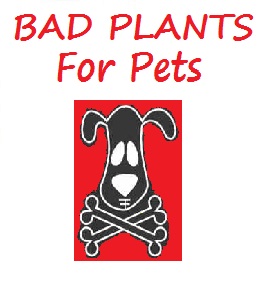Blue cardinalflower

The Great Blue Lobelia (Lobelia siphilitica) is a species of Lobelia found in swamps and wet ground from Maine to Manitoba and Colorado, south to North Carolina and Texas. The erect, 2 to 3 foot stems produce lavender-blue, tubular flowers in long terminal racemes. The alternate leaves are toothed and narrowly oblong to elliptic to lanceolate or oblanceolate. It blooms from August to October and is considered a short lived perennial (with each plant living for only a few years).
As is the case with other species of this genus such as Lobelia cardinalis and Lobelia siphilitica, this plant contains an array of pyridine alkaloids which act upon the body in a similar fashion to nicotine. They are divided into three groups; the lobelines, lelobines, and lobinines. In Lobelia inflata, the major alkaloid responsible for the severe symptoms of intoxication is lobeline; with the highest concentration of the toxin occurring in the summer to fall when the plant produces flowers. Poisonous to cattle, sheep, goats, and humans, the symptoms of poisoning by lobeline are much the same, but slightly less pronounced than those of poisoning by nicotiana tabacum (cultivated tobacco) or nicotiana glauca (tree tobacco). Like nicotine, lobeline is a potent nicotinic ganglionic stimulant that also has atropinic activity, which at low doses acts as a stimulant and at high doses as a severe central nervous system (CNS) depressant.
Clinical signs will generally develop within one to two days of ingesting the plant. The initial symptoms of intoxication are diarrhea, drooling, excess nasal discharge, vomiting, extension of the neck, and drooping of the ears. As the disease progresses (generally over the course of hours) animals may exhibit pupillary dilation, depression, loss of appetite, total exhaustion, weakness and/or collapse. As the animal’s condition worsens, cardiovascular irregularities will become apparent. Breathing will become shallow and difficult. The pulse, at first weak, will become almost imperceptible. Animals may convulse, become ataxic, and suffer partial or complete paralysis of the extremities, culminating in death by cardiac arrest due to paralysis of the respiratory muscles. Depending upon the severity of the intoxication, death may occur within hours of the initial symptoms or may be delayed as long as a few days. In instances when an animal ingests a significant, but less than lethal amount, there may be prolonged narcosis.
While the prognosis with prompt treatment is considered good (i.e. the animal is witnessed eating a plant of the Lobelia genus, stopped and treated), the sad fact is that most animals that ingest a potentially lethal dose of lobeline will go unnoticed until clinical signs develop. In cases where a large amount of the plant has been ingested the time between the onset of symptoms and death can be as little as a few hours or delayed as long as a few days. In simplest form this means that many animals are destined for a fatality by the time signs present and many will die before being seen by a veterinarian to institute treatment.
In the case of dogs and cats, it is rare that a fatal amount will be ingested as the plant has emetic properties which would generally cause the animal to start vomiting shortly after ingestion. Additionally it is unlikely that a dog or cat could tolerate ingesting enough of the plant over a short enough time frame to cause a potentially life threatening intoxication.
In the case of horses, and other grazing animals they are unlikely to choose the plant as a food resource unless other sources of food are unavailable. Regardless, it should not be allowed to grow in or around pastures or other areas where grazing animals are likely to come into contact with it.
There is no definitive antidote for lobeline poisoning as it act upon the body in a similar fashion as nicotine. Thus treatment is largely symptomatic and supportive with the emphasis being on respiratory support as death is almost always due to acute respiratory failure. In cases of a witnessed ingestion, where only a small amount of the plant may have been consumed vomiting should be induced. Activated charcoal is also a valuable tool at neutralizing ingested lobeline in the stomach. The pet should be watched closely for worsening signs of neurological distress and treated accordingly. In many cases of a minor ingestion, the pet will make a full recovery in a matter of hours.
In cases of acute toxicity where a large amount of the plant may have been ingested or smaller amounts over a number of days and advanced clinical signs are starting to manifest aggressive respiratory support, and treatment of shock are important countermeasures. As with ingestion of smaller amounts vomiting should be induced; gastric lavage could also be performed. The "universal antidote" or activated medical charcoal should also be given as it is a valuable adjunct in neutralizing ingested lobeline in the stomach. After charcoal has been in the stomach 15 minutes re-induce vomiting. Tannic acid solution may also prove useful in precipitating this alkaloid. Alkaline solutions, which facilitate absorption, should be avoided. Diluted potassium permanganate (1:10,000) solution in the lavage fluid can also be used to dilute the lobeline. Following the permanganate rinse, the patient should be calmed and kept warm to avoid shock. Apply artificial respiration if necessary to keep patient breathing.
Symptoms of parasympathetic or sympathetic hyperactivity should be controlled with atropine and phentolamine given intravenously or intramuscularly. Cardiac arrythmias can be treated with propranolol . Patients exhibiting convulsions may require sedation (e.g. intravenous diazepam) and vasopressor drugs if hypotension fails to respond to the usual therapy.
In lobeline poisoning the primary cause of death is respiratory paralysis. In cases where a large amount has been ingested, it is highly likely that artificial respiration will be needed to keep the patient breathing and alive until antidotes and the body's natural detoxification mechanisms can destroy the toxin and reduce it to non-toxic concentrations. Prevent further ingestion of the plant and contact your veterinarian.




